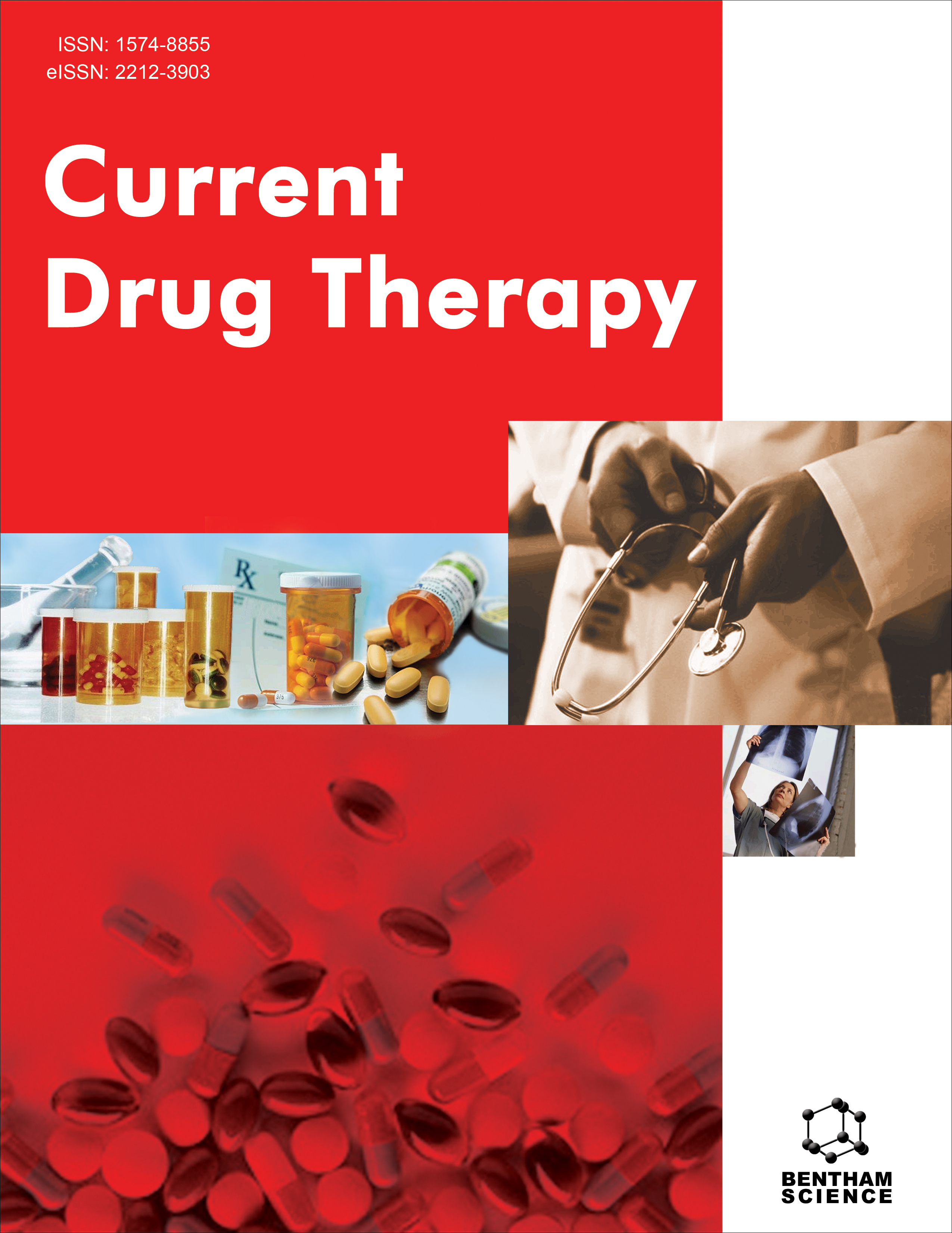- Home
- A-Z Publications
- Current Drug Therapy
- Previous Issues
- Volume 17, Issue 5, 2022
Current Drug Therapy - Volume 17, Issue 5, 2022
Volume 17, Issue 5, 2022
-
-
Drug Targeting and Conventional Treatment of Multiple Myeloma: Analysis of Target-specific Nanotherapies in Disease Models
More LessAuthors: Christina Tran, Eden Park, Pedro L. Rodriguez Flores and Robert B. CampbellExtensive studies have explored potential therapies against multiple myeloma (MM), whether in hospitals, universities, or in private institutional settings. Scientists continue to study the mechanism(s) underlying the disease as a basis for the development of more effective treatment options. There are many therapeutic agents and treatment regimens used for multiple myeloma. Unfortunately, no cure or definitive treatment Read More
-
-
-
Electrospun Chitosan Nanofibres and its Application
More LessAuthors: Pradnya Palekar-Shanbhag, Amruta Dalal, Tejaswini Navale and Ujala MishraChitosan is a biopolymer that has been widely used in medical, pharmaceutical, agricultural, cosmetics, food as well as textile, and paper industries due to its biocompatibility, biodegradability, non-toxic, and less allergenic nature. In recent times, chitosan has gained much attention for its application in the form of nanofibres. Nanofibres have diameters in the range of 1 to 100 nanometers. Various processing techniques lik Read More
-
-
-
Overview of Drug Therapy of COVID-19 with Safety and the Potential Clinical Benefits
More LessAuthors: Rajesh Basnet, Sandhya Khadka, Buddha B. Basnet, Til Bahadur Basnet and Sanjeep SapkotaThe discovery and development of the drug/vaccine for Coronavirus Disease 2019 (COVID-19) is the process of developing a preventive vaccine or treatment drug to reduce the severity of COVID-19. Internationally, hundreds of pharmaceutical companies, biotechnology companies, university research groups, and the World Health Organization (WHO) have developed vaccines for the past few centuries. Currently, they are cont Read More
-
-
-
Recent Applications of Natural Polymers in the Formulation of Nanogel
More LessAuthors: Prashant Upadhyay, Shivani Agarwal and Sukirti UpadhyayNanotechnology is a progressing and novel technique in healthcare and smart drug delivery. There are many benefits and future aspects of nanogel-containing nanoparticles in the advanced diagnosis, mitigation, and treatment of many important disorders with improved outcomes because of their particle size, high stability, biodegradability, biocompatibility, large surface area, and high drug charging capacity. Their Read More
-
-
-
Neurocognitive Changes in Chronic Hepatitis C Patients Receiving Combination Therapy of Interferon and Ribavirin: A Systematic Review
More LessAuthors: Momin A. Wani, Nidhi B. Agarwal, Yasmeen and Mohd Ashif KhanBackground: Approximately 3% of the world’s total population is affected by the Hepatitis C virus (HCV). The treatment for HCV differs widely across countries, and one of the therapies used is the combination of interferon (INF) and ribavirin (RBV). Few studies have shown that this combination increases the rate of sustained virological response in HCV patients, resulting in beneficial effects on cognition, while other studies repor Read More
-
-
-
Design, Optimization and Characterization of Combined Ethosomal Transdermal Patch of Glimepiride and Duloxetine Drug Regimen for Diabetes and Associated Neuropathic Pain Management
More LessAuthors: Eswar k. Aouta and Chinam Niranjan PatraBackground: Diabetic neuropathic pain is the most prevalent type of neuropathic pain and a major consequence of diabetes. A wide range of medications, whether administered alone or in combination, have been found to dramatically decrease neuropathic pain. Objective: This study aimed to develop the glimepiride (GLM) and duloxetine (DUL) ethosomal transdermal drug delivery patches to prolong and improve the Read More
-
-
-
Statins Enhance the Potency of First Line Anti-Helicobacter Regimens to that of Second Line Regimens
More LessBackground: Infection-related to Helicobacter pylori (HP) is one of the most common human bacterial infections, affecting about 50% of the human population. This bacterium causes chronic inflammation and eventually mucosal gastric metaplasia. Antibiotics are commonly used to eradicate Helicobacter pylori infection. Presumably, statins could increase the effectiveness of anti-HP regimens because of some anti-inflammato Read More
-
Volumes & issues
-
Volume 20 (2025)
-
Volume 19 (2024)
-
Volume 18 (2023)
-
Volume 17 (2022)
-
Volume 16 (2021)
-
Volume 15 (2020)
-
Volume 14 (2019)
-
Volume 13 (2018)
-
Volume 12 (2017)
-
Volume 11 (2016)
-
Volume 10 (2015)
-
Volume 9 (2014)
-
Volume 8 (2013)
-
Volume 7 (2012)
-
Volume 6 (2011)
-
Volume 5 (2010)
-
Volume 4 (2009)
-
Volume 3 (2008)
-
Volume 2 (2007)
-
Volume 1 (2006)
Most Read This Month
Article
content/journals/cdth
Journal
10
5
false
en


